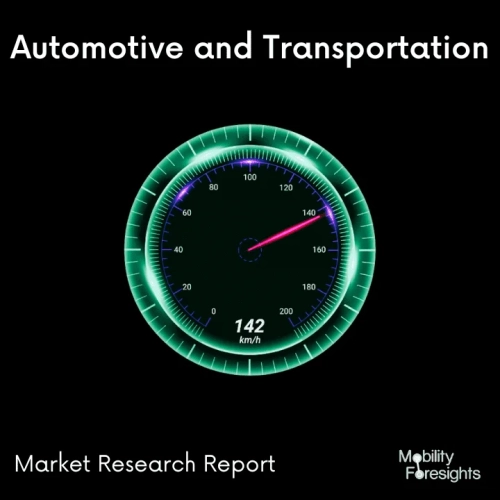
- Get in Touch with Us

Last Updated: Apr 25, 2025 | Study Period:
The Asia Pacific electronic toll collection market is experiencing significant growth, driven by rapid urbanization, rising vehicle ownership, and increasing government initiatives to modernize transportation infrastructure. As countries in the region continue to expand their highway networks, the demand for efficient and automated toll-collection systems is escalating. The adoption of ETC systems is not only enhancing revenue collection for governments but also reducing traffic congestion, improving fuel efficiency, and minimizing environmental impact.
Technological advancements play a pivotal role in shaping the market, with innovations in RFID, GPS, and cloud-based systems enabling faster and more secure toll transactions. However, the market faces challenges such as high implementation costs, the need for system interoperability, and concerns over data security. Despite these hurdles, the Asia Pacific ETC market is poised for robust growth, supported by favourable government policies and the integration of tolling systems with smart city initiatives.
The Asia Pacific electronic toll collection market is a rapidly evolving sector within the broader transportation industry, encompassing a range of technologies designed to automate toll collection on highways and urban roads. The market's significance lies in its ability to streamline toll operations, reduce traffic congestion, and enhance the efficiency of transportation networks across the region.
There are various types of ETC systems in use, including Radio Frequency Identification (RFID)-based tolling, Global Positioning System (GPS)-based tolling, and Dedicated Short-Range Communication (DSRC)-based tolling. Each system offers distinct advantages, with RFID being the most widely adopted due to its cost-effectiveness and ease of implementation.
The key applications of ETC systems include toll collection on highways, expressways, and urban roads, as well as congestion pricing and parking fee collection in urban areas. These systems are crucial for governments and transportation authorities in managing traffic flow and generating revenue for infrastructure development.
While ETC systems offer numerous benefits, such as reduced fuel consumption, lower emissions, and faster toll transactions, they also present challenges. High installation costs, the need for system interoperability across different regions, and concerns about data privacy and security are some of the key hurdles that market players must address.

The Asia Pacific electronic toll collection market was valued at approximately USD 1.8 billion in 2023 and is expected to reach USD 3.7 billion by 2030, growing at a CAGR of 10.2%. Key drivers of this growth include increasing urbanization, rising vehicle ownership, and government initiatives to modernize tolling infrastructure.
The market is also benefiting from technological advancements and the growing integration of ETC systems with smart city projects. Looking forward, the market is expected to witness strong growth in emerging economies such as India, Indonesia, and Vietnam, where infrastructure development is a key focus area.
The Asia Pacific electronic toll collection market is characterized by several significant trends that are shaping its future trajectory. One of the most prominent trends is the shift towards multi-lane free-flow (MLFF) tolling, which allows vehicles to pass through toll plazas without stopping, thereby reducing congestion and improving travel times. This trend is particularly evident in countries like Japan and South Korea, where advanced tolling technologies are being deployed.
Another key trend is the increasing adoption of cloud-based tolling solutions, which offer scalability, flexibility, and enhanced data security. These solutions are being increasingly integrated with smart city initiatives, enabling real-time traffic management and seamless transportation networks.
The rise of vehicle-to-infrastructure (V2I) communication technologies is also influencing the market, providing enhanced accuracy and efficiency in toll collection processes. Additionally, there is a growing focus on environmental sustainability, with ETC systems being promoted as a means to reduce carbon emissions and fuel consumption.
| SI No. | Topic |
| 1 | Market Segmentation |
| 2 | Scope of the Report |
| 3 | Research Methodology |
| 4 | Executive Summary |
| 5 | Key Predictions of the Asia Pacific Electronic Toll Collection Market |
| 6 | Average B2B Price of Electronic Toll Collection Systems, By Region |
| 7 | Major Drivers for the Asia Pacific Electronic Toll Collection Market |
| 8 | Asia Pacific Electronic Toll Collection Market Production Footprint - 2023 |
| 9 | Technology Developments in the Asia Pacific Electronic Toll Collection Market |
| 10 | New Product Development in the Asia Pacific Electronic Toll Collection Market |
| 11 | Research Focus Areas on New Toll Collection Technologies |
| 12 | Key Trends in the Asia Pacific Electronic Toll Collection Market |
| 13 | Import and Export of ETC Systems and Their Impact on the Market |
| 14 | Regulations and Incentives for ETC Systems, By Region |
| 15 | Major Projects Utilizing ETC Systems in Asia Pacific |
| 16 | Market Size, Dynamics, and Forecast, By Geography, 2024-2030 |
| 17 | Market Size, Dynamics, and Forecast, By Type, 2024-2030 |
| 18 | Market Size, Dynamics, and Forecast, By Application, 2024-2030 |
| 19 | Market Size, Dynamics, and Forecast, By Component, 2024-2030 |
| 20 | Competitive Landscape of the Asia Pacific Electronic Toll Collection Market |
| 21 | Mergers and Acquisitions in the ETC Market |
| 22 | Growth Strategy of Leading Players |
| 23 | Market Share of Vendors, 2023 |
| 24 | Company Profiles of Key Players |
| 25 | Unmet Needs and Opportunities for New Suppliers |
| 26 | Conclusion |
| 27 | Impact of Emerging Technologies on the Market |
| 28 | Consumer Behavior and Preferences Analysis |
| 29 | Environmental Impact of Electronic Toll Collection Systems |
| 30 | Future Outlook and Predictions for the Asia Pacific ETC Market |